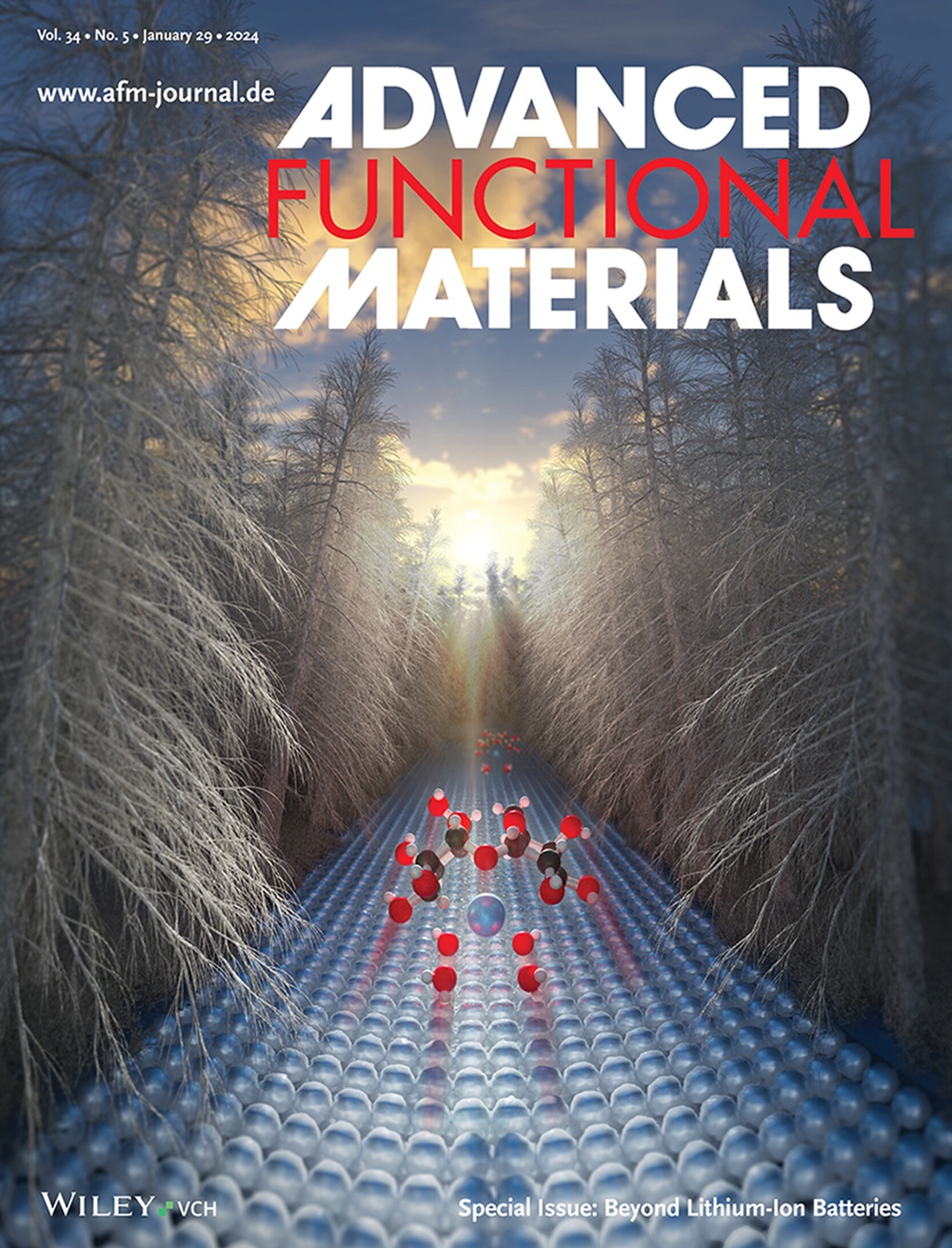High‐Performance Synaptic Devices Based on Cross‐linked Organic Electrochemical Transistors with Dual Ion Gel
IF 18.5
1区 材料科学
Q1 CHEMISTRY, MULTIDISCIPLINARY
引用次数: 0
Abstract
Organic electrochemical transistors (OECTs) represent a promising approach for flexible, wearable, biomedical electronics, and sensors integrated with diverse substrates. Their ability to operate at low voltages and interact effectively with biological systems makes them particularly suitable for neuromorphic applications. For neuromorphic devices, OECTs must enhance electrical performance, biocompatibility, and signal storage/erasure capabilities. While UV cross‐linking methods with various side effects on organic semiconductors are predominant in improving mobility and current retention time, thermal cross‐linking based on the solution process has not been extensively explored. Additionally, despite significant research on the modification of electrolyte property, the ionic charge compensation mechanisms between multiple electrolytes are still unclear. This study employs a cross‐linking strategy involving the chemical reaction of poly(3‐hexylthiophene‐2,5‐diyl) (P3HT) with di‐tert‐butyl‐peroxide (DTBP) to create a cross‐linked P3HT active layer. Furthermore, a dual ion gel structure combining a conventional ion gel with a chitosan‐based ion gel is investigated for increased ionic transport to enhance OECT performance. Using the above two methods, the enhanced electrical performance showing the mobility of 25 F cm基于双离子凝胶交联有机电化学晶体管的高性能突触器件
有机电化学晶体管(OECTs)是将柔性、可穿戴、生物医学电子设备和传感器与各种基底集成的一种前景广阔的方法。有机电化学晶体管能在低电压下工作,并能与生物系统有效互动,因此特别适合神经形态应用。对于神经形态设备,OECTs 必须提高电气性能、生物兼容性和信号存储/测量能力。紫外线交联法对有机半导体有各种副作用,在提高迁移率和电流保持时间方面占主导地位,而基于溶液工艺的热交联法尚未得到广泛探索。此外,尽管对电解质性质的改变进行了大量研究,但多种电解质之间的离子电荷补偿机制仍不清楚。本研究采用的交联策略涉及聚(3-己基噻吩-2,5-二基)(P3HT)与二叔丁基过氧化物(DTBP)的化学反应,以生成交联的 P3HT 活性层。此外,还研究了结合传统离子凝胶和壳聚糖离子凝胶的双离子凝胶结构,以增加离子传输,提高 OECT 性能。利用上述两种方法,展示了具有双离子凝胶结构的交联 OECTs 25 F cm-1 V-1 s-1 迁移率的增强电学性能和具有长期可塑性的突触特性,表明其具有作为高性能神经形态器件应用的潜力。
本文章由计算机程序翻译,如有差异,请以英文原文为准。
求助全文
约1分钟内获得全文
求助全文
来源期刊

Advanced Functional Materials
工程技术-材料科学:综合
CiteScore
29.50
自引率
4.20%
发文量
2086
审稿时长
2.1 months
期刊介绍:
Firmly established as a top-tier materials science journal, Advanced Functional Materials reports breakthrough research in all aspects of materials science, including nanotechnology, chemistry, physics, and biology every week.
Advanced Functional Materials is known for its rapid and fair peer review, quality content, and high impact, making it the first choice of the international materials science community.
 求助内容:
求助内容: 应助结果提醒方式:
应助结果提醒方式:


